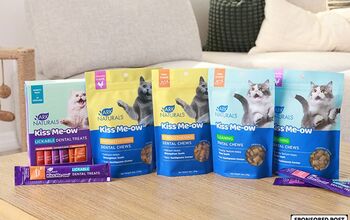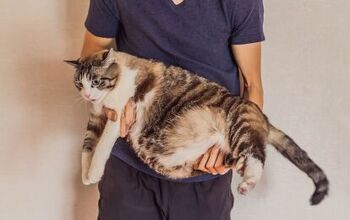Koolie


About Koolie
Koolie Basics
When you see the Koolie for the first time, you may think that you are looking at an Australian Cattle Dog. The breed is, in fact, an Australian breed but it is actually the other way around – the breed played a role in the development of the Australian Cattle Dog, also known as the Blue Heeler. Interestingly, however, the breed is sometimes misrepresented as a German breed because it is also known as the German Koolie.
Koolies played a role in the development of the Australian Cattle Dog.
Origin
The Koolie is also known as the German Koolie because the predecessors of the breed were brought to Australia by early German settlers. The German Koolie was used as an all-purpose working breed until the 1800s when one of them accidentally mated with a Dingo, the wild dog of Australia. The result of this mating was a short-coated working breed ideally suited to the hot climate in the Australian outback. The breed rapidly gained popularity after that point and was used to develop other Australian working breeds like the Australian Kelpie and the Australian Cattle Dog.
Pedigree
It is a peculiar case with most modern designer breeds that their origins and pedigree are often hard to source. They can be a first generation hybrid, or an offspring of several generations of Koolies. As such, breeders can’t always provide you with a pedigree, as is the case with purebred dogs. The modern Koolie is the product of a cross between the Australian Dingo and the German Koolie, a working dog brought to Australia by early German settlers. As you see, we can learn a lot more about a Koolie simply by observing its parentage than tracking their obscure history. We know a lot about the German Koolie and the Australian Dingo – these are hardy and hard-working shepherding breeds that have been around for ages. Learn more about them and you will quickly see the pedigree and qualities of a Koolie – through its parents.
Food/Diet
As a medium-sized dog, the Koolie should be fed a high-quality dry food formulated for medium breeds. This is also a working breed, however, so he may respond better to an active or working breed formula. You still need to be careful about overfeeding, however, to prevent obesity.
Training
The Koolie is a very intelligent and hard-working breed that generally responds well to training. These dogs love having a job to do and they excel in a variety of dog sports including herding, agility, obedience, and more. The dog does best with positive reinforcement training and responds well to a firm and consistent hand in leadership. Keep in mind that you may have to keep your training sessions short to prevent your dog from getting bored.
Weight
The Koolie is a medium sized dog, standing 13 to 23 inches tall and weighing anywhere from 33 to 53 pounds at maturity. Males and females are not drastically different in size. With their size, they fit directly into the medium sized dog group. As such, they can be dependent on their environment and space they are in. This is not a dog for tiny homes or cramped apartments – they will simply not do well in such conditions. Of course, wherever they are, they will require a space to exercise and play, and will need a lot of time spent outside, on walks and in the park.
Temperament/Behavior
The Koolie can be a challenging breed to keep, but not because it has a poor temperament – it is just a high-energy breed that requires a lot of attention and exercise. This breed is intelligent and hardworking in the field but fun-loving and easygoing in the home. These care-free dogs make a lively family pet and they generally get along with other dogs, cats, and household pets – they are also great with kids. Above all, however, the breed is just a nice, friendly dog that loves life and will enjoy every experience he has to the fullest capacity.
Common Health Problems
Most herding breeds are meant for the life of work outdoors, which means that they have the tendency to be hardy and enduring – it simply runs in their blood and their genetic code. And once you consider that hybrid breeds are also very hardy and take only the best from their parents, you can see how this designer breed can turn out to be a surprisingly healthy doggo. The Koolie is thus a healthy and hardy breed with a very long average lifespan. This is partially due to the fact that the dog has such a diverse gene pool. As such, it isn’t affected by many genetic health problems, but there are some conditions to which the breed is prone. These may include joint problems, skin allergies, and hip dysplasia.
Still, don’t be mistaken and think that they are impervious to everything and anything, being invincible. They will need your care and attention in order to remain hardy and enduring. This includes a good and healthy diet, a lot of exercise and mental stimulation, regular vet checkups, and plenty of affection. These are the fundamentals of a happy and healthy dog that can reach its utmost potential.
Life Expectancy
The average lifespan for the Koolie is very high, between 12 and 18 years. This hardy and reliable breed is noted for its longevity. If we consider that 15 years is an average high lifespan for most dog breeds, Koolie surpasses that boundary, reaching a maximum of 18 years of age. In fact, the longest recorded age in any dog was that of 29 years, recorded in Bluey, an Australian Cattle Dog. And since there are close ties between them and Koolies, the longevity becomes apparent as a shared trait.
And when you consider the fact that Koolies are affectionate, smart, loyal, and playful dogs, you can expect a true companion dog that will be by your side for a very long time – a big part of your life. Of course, such an imposing doggo lifespan can only be achieved with your assistance. You need to provide ample care, including a good and healthy diet, plenty of exercise, mental stimulation, affection, and regular vet checkups. Your dog depends on you in many ways!
Exercise Requirements
The Koolie is a working breed with high energy levels and excellent stamina. This breed requires a long daily walk and plenty of time and space to run outdoors. Without adequate exercise, they tend to develop destructive behaviors. Adequate exercise will also help to extend the dog’s lifespan. So, whatever the environment your dog is in, you will still need to include all that walking in the park or nature, and active play time. Don’t neglect that.
In its historic role, the Koolie was a true homesteader dog, bred to work on the ranches and farms of early settlers and to herd cattle and ward off intruders. As such, the Koolie is in many regards a true outdoors dog, filled with energy and high spirits. If you coop this dog up into a tiny apartment, it might not do them well. They will benefit the most from a large home with plenty of free space. Even better, a fenced-in yard will be ideal. That’s where a Koolie can run and play all they want, spending all that spare energy. And, after all, if you happen to live on a farm or a ranch, or have a very big property, your Koolie friend will be immensely pleased – it’s just where they belong!
AKC
The Koolie is not currently recognized by the AKC, nor by any other major breed clubs. There are, however, numerous organizations and clubs that are devoted solely to the Koolie – and all things related! These clubs are run by Koolie breed enthusiasts and lovers, and will offer you an important insight into the very important aspects of the breed. Things like proper diet, care, grooming, basic needs, health issues, and similar things can be learned from these experienced Koolie owners. Most importantly, however, is the insight into the breed’s pedigree – you can find out what are the iconic features of a Koolie and what makes up the ideal breed example straight from these reputable clubs and organizations.
Coat
The pride and joy of every dog breed is their coat. It is also their most distinctive trait that sets them apart from others. However, the coat also determines how high-maintenance a breed is when it comes to their grooming routine – after all, whatever the coat type, it will need your attention to remain spotless and pretty. The Koolie is similar in appearance to many herding breeds, having a medium size and a muscular build. The dog’s coat is typically short and smooth, slightly longer on the tail. Some are born with medium-length coats, though this is not preferred. The most common colors for the breed are red merle or blue merle with white markings, though these dogs can also be red or black with merle markings. The longer-coated varieties usually have a wave to their coat.
Needless to say, it is up to every responsible owner to maintain their pet’s coat. Establish a regular weekly routine of caring for the coat. Light brushing will be fine for general maintenance and for keeping everything tidy and neat – once or twice a week should suffice, but you can do it more often if need be. Additionally, in order to take the hygiene to the next level, be sure to bathe your pet when needed and keep their nails trimmed and neat. Remember that proper hygiene can largely determine the wellbeing and good health of a dog.
Puppies
All dog breeds are most sensitive when they are in their earliest stage. Of course, they are also the cutest. Koolie puppies are no exception – when tiny they are so endlessly cute. Of course, this will attract many eager cuddlers and careless hands. Improper handling of a puppy can result in injury, and possibly trauma. Puppies are easily scared by huge crowds, loud noises, and rough handling. This can leave them with many issues down the road, such as anxiety and too much fear. So make sure to avoid crowds or eager children in those first fragile days of a Koolie’s life. But as soon as they become aware of their surroundings and curious, you can start socialization, which is a very important part of their upbringing.
The average litter size for the Koolie breed is 4 to 6 puppies. Because the Koolie has very high energy levels and a propensity for mischief, early socialization and training is a must. If you plan to use this dog for herding or dog sports, you should start early in training for that as well. Some Koolies may develop a habit of herding other dogs and household pets, but they are not aggressive or dangerous.
Photo credit: vauvau/Bigstock; LouLou007/Bigstock

Kate Barrington is the loving owner of two cats (Bagel and Munchkin) and a noisy herd of guinea pigs. Having grown up with golden retrievers, Kate has a great deal of experience with dogs but labels herself a lover of all pets. Having received a Bachelor's degree in English, Kate has combined her love for pets and her passion for writing to create her own freelance writing business, specializing in the pet niche.
More by Kate Barrington
























